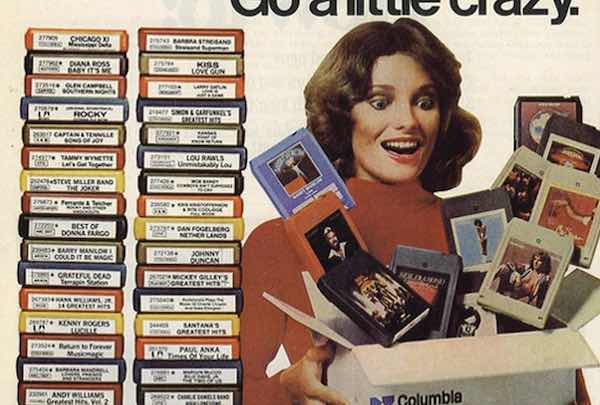Members of my generation lived to see plenty of changes in the ways popular music is consumed. We were born in the golden age of the vinyl album. As adults, many of us are learning to cope with streaming music services.
Throughout most of the 1980s, the audio cassette tape was the most popular means of buying music and listening to it. When I see nostalgic Facebook posts about physical music media from the 1980s, the cassette tape is most often the subject.
But there was another musical format that was already dying out as the 1980s began, but which was actually quite good, by the standards of the time. I’m talking about the venerable 8-track tape.
The 8-track was a plastic cartridge that had dimensions of 5.25 x 4 x 0.8 inches. Like the audio cassette, the 8-track contained a magnetic tape. But unlike the audio cassette, the 8-track was much less prone to kinking and tangling.
The 8-track was actually 1960s technology. The 8-track took off in the middle of that decade, when auto manufacturers began offering 8-track players as factory-installed options in new vehicles. Throughout the 1970s, 8-track players were popular options on new cars. 8-tracks were further popularized by subscription music services like Columbia House.
I purchased my first home stereo system for my bedroom in 1982, with money I had saved from my grass-cutting job. I bought it at Sears, which was one of the best places to buy mid-level home audio equipment at that time. The stereo included an AM/FM radio, a turntable for vinyl records, a cassette deck, and an 8-track player.
I quickly discovered that I liked the 8-track format the best, because of its relatively compact size and ease of use. That spring I bought 8-track versions of Foreigner 4, Styx’s Paradise Theater, and the Eagles Live album. All of these produced good sound (again, by the standards of that era), and none of them ever jammed or tangled. I was convinced that I had found my musical format.
It has often been my destiny to jump on a trend just as it is nearing its end. Little did I know that my beloved 8-track was already in steep decline.
8-track sales in the USA peaked in 1978, and began falling after that. The culprit was the slightly more compact, but far more error-prone audio cassette. This was the format that all the retailers were suddenly pushing. By the early 1980s, cassette players were also replacing 8-track players in cars.
I would like to say that I yielded to the march of technological progress, but this wouldn’t be truly accurate. The audio cassette, invented in 1963, was slightly older technology than the 8-track.
I did, however, yield to the march of commercial trends, simply because I had no choice. Nineteen-eighty-three was the year that retailers began phasing out 8-tracks in stores. You could still purchase them from subscription services, but they were disappearing from the shelves of mall record stores and general merchandisers like K-Mart. By early 1984, the venerable 8-track had completely vanished.
In recent years, there has been a movement to resurrect the vinyl record. I’ve noticed no similar trend aimed at bringing back the 8-track. At this point, in the early- to mid-2020s, I may be the only person left on the planet who still fondly remembers this bygone musical medium.
-ET

